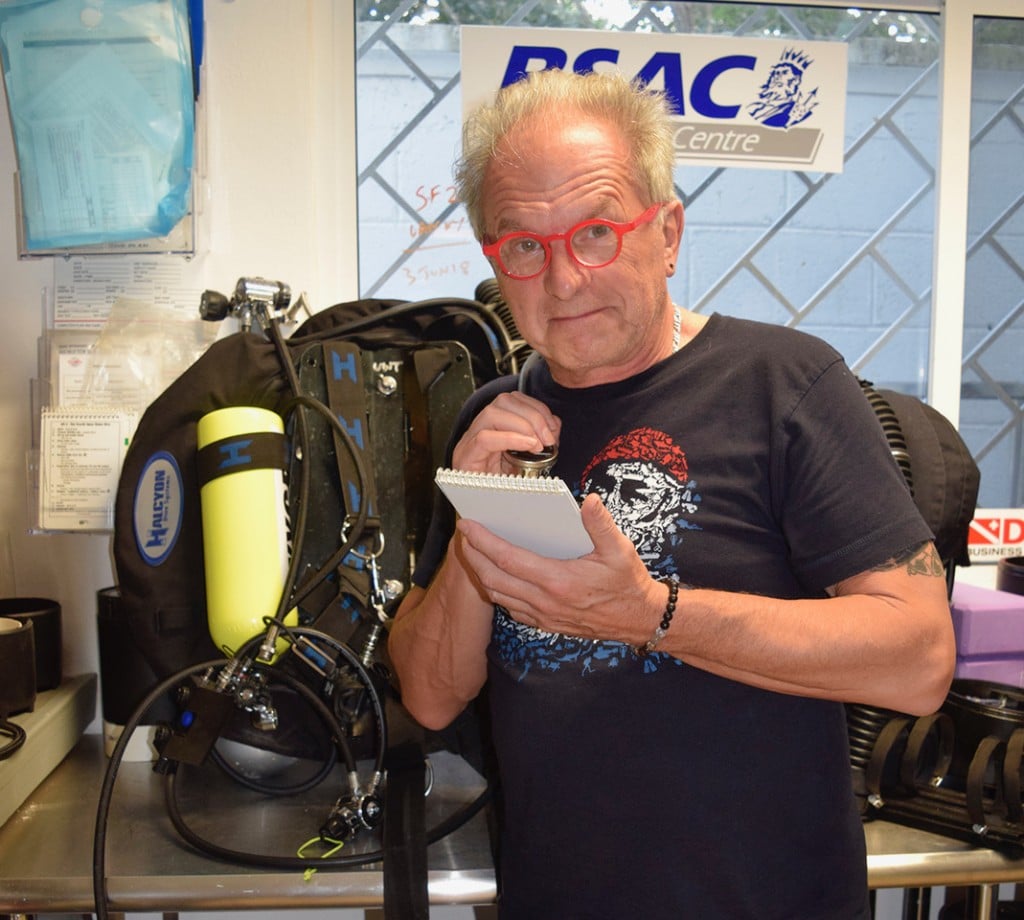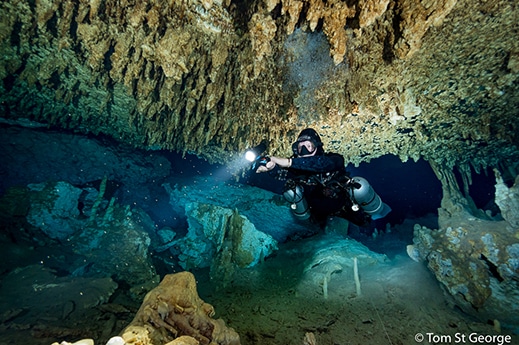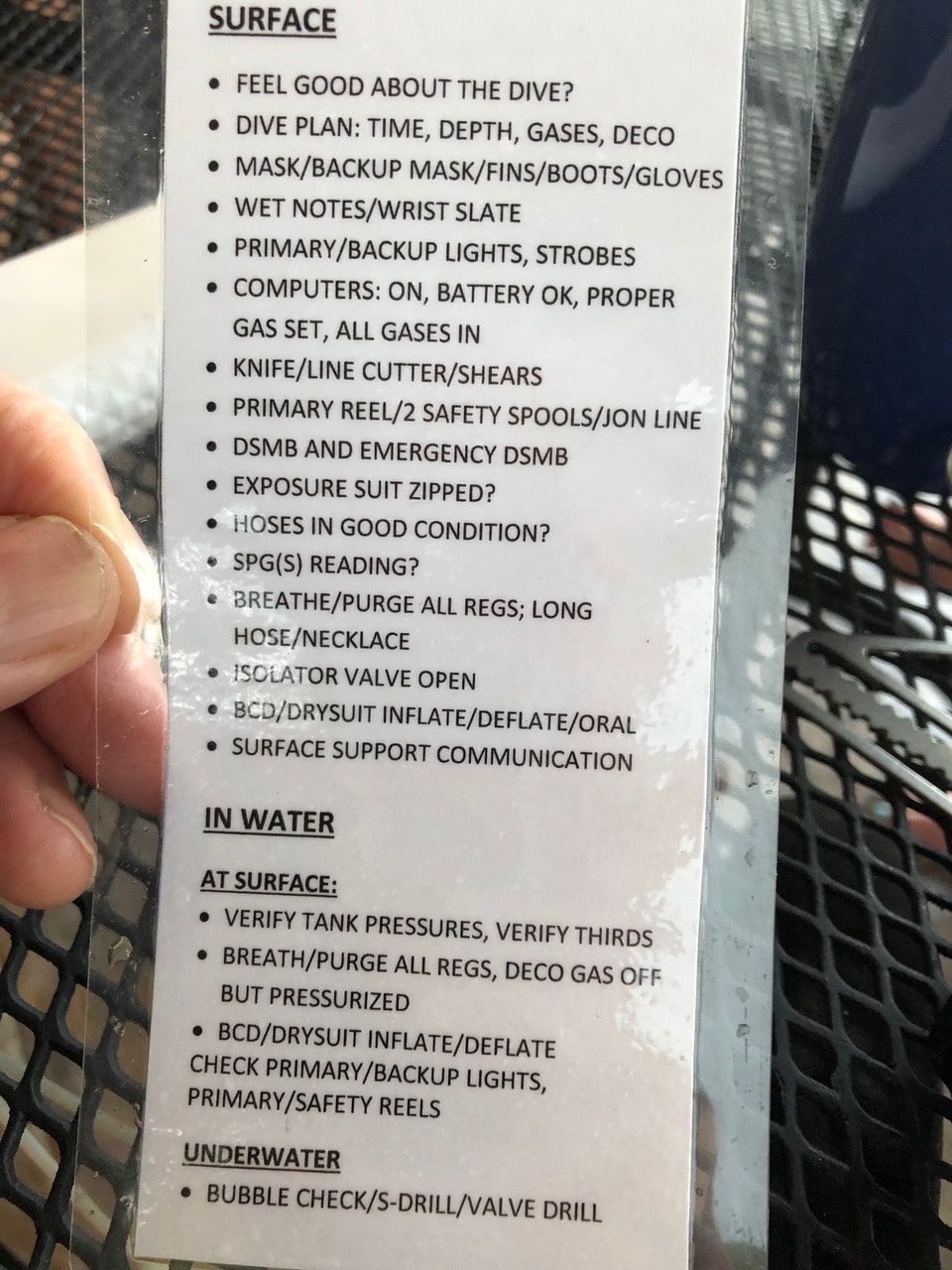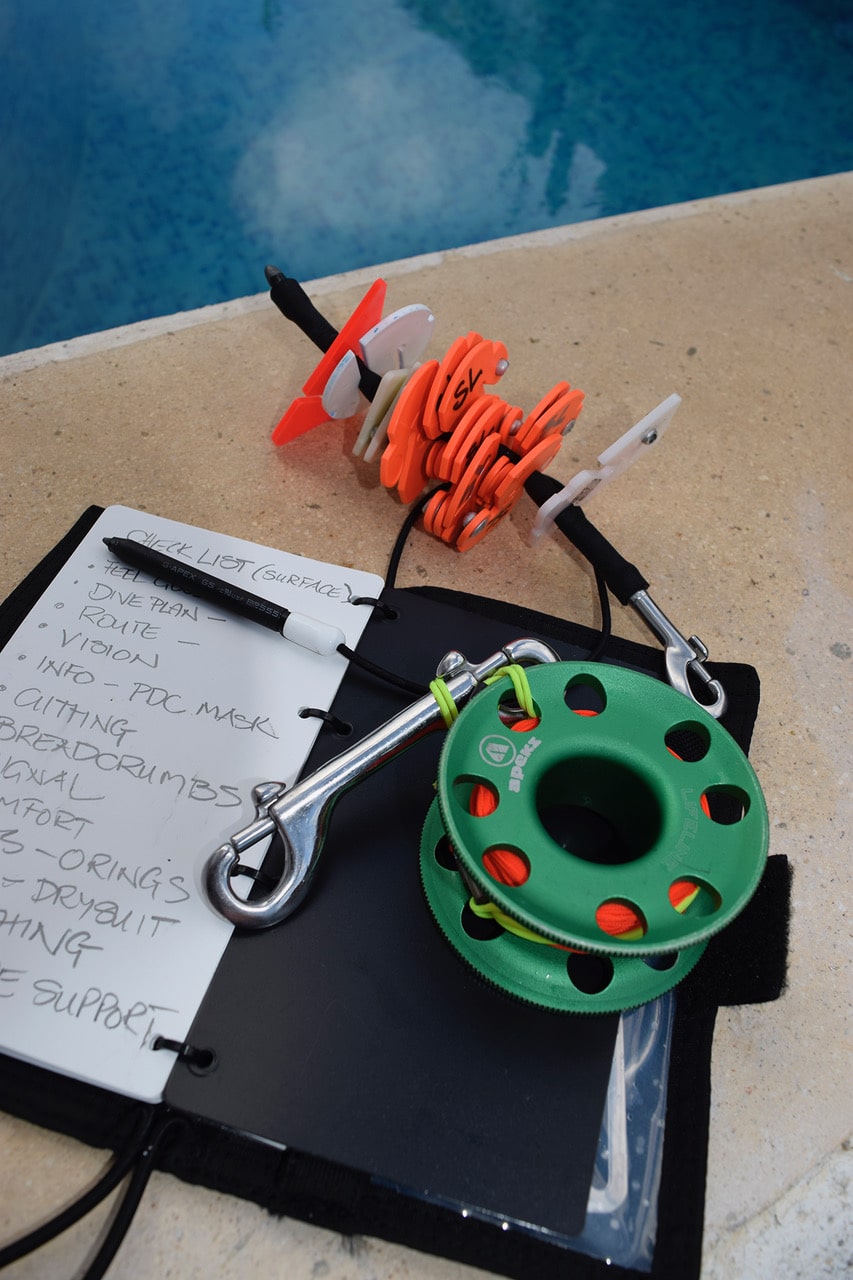Dive Training Blogs
Is a pre-dive checklist overkill for recreational divers?

In his first blog for Scubaverse, Steve Lewis talks about the importance of pre-dive checklists for ALL divers…
Pre-dive checklists are a brilliant idea. Using them properly can save embarrassment, and things that are much worse; for example, sinking like a rock and having nothing to breathe when you hit the bottom.
Every scuba training agency with a plastic card printer at head office seems to agree because each has its own acronym for what to check before we jump into the water. These are a sort of verbal reminder about weights, and hoses, connections, air (or gas) pressure, and all the other bits and pieces that help to keep us safe and happy underwater. It’s highly likely — I’d bet a beer and pretzel against a poke in the eye — that you were taught one of those mnemonics in your open-water class.
The only drawback is that it is also highly likely the folks kitting up beside you at your favourite dive site, don’t bother to use a checklist at all; or can’t remember how the ABCDEF, or whatever alphabet soup they were taught, relates to all the things that need to be checked before launching themselves into the deep blue. Their checklist is incomplete.
And so, it’s probable you have witnessed people jumping off dive boats with no fins on, their mask around their neck, their low-pressure inflator unconnected, weight belt someplace other than around their middle, and so on.

A checklist can help keep surprises to a minimum; especially nice when the surface is long swim away. Photo of the author in a Mexican cave by Tom St. George.
We can certainly do better. But the answer is NOT another acronym. Fact is, the stats seem to tell us that for the average diver (recreational or technical), a verbal checklist is as useful as a chocolate poker.
One reason for this is with almost everything we learn, retention is difficult. If teaching is about making a permanent change in behaviour — and that is arguably a fine definition — it follows that it takes work from both the instructor and the instructed to make change happen. It appears we are not doing a stellar job at it.
I think the answer is either a written checklist — the one you were originally taught may be fine — or at least something visual to trigger memory.
Okay, it’s time to declare a conflict of interest: I’m a cave diver. Worse, I am a cave diving instructor evaluator. I also teach rebreathers. In both those situations, checklists save lives. “My name is Steve. I am ADD, I love checklists.”

The benefit of using a physical checklist, far outweigh the “inconvenience” of carrying one!
Being a realist, it is obvious that getting every diver on the face of the earth to conform to the type of pre-dive routines taught to cave and CCR divers is a pipe-dream. A group of dive-shop operators recently told me en-masse that “advanced cave diving skills” — trim, buoyancy, gas management and most specifically using a physical checklist — are total overkill for “ordinary” divers.
I bit my tongue because I was outnumbered; but I was able to say “bullshit” before they all walked away. Surely a bimble at five or six metres on a nice tropical reef someplace warm and sunny deserves as much respect in its way to a swim a kilometre and a half back into a cave. At least until we learn to breathe water.
Last Christmas, I did something really unusual: I taught an open water diver course. It was for a special student: my girlfriend, and it was unusual because for the past 20-odd years, I’ve focused on teaching exclusively technical diving: trimix, decompression, sidemount, rebreather, and cave diving. I’ve run open water instructor programs over the years, but my poor girlfriend was in my first beginner’s class since sometime in the last century.
Consequently, it was a terrible course. First-off, she was asked to dive sidemount. Also, she had to demonstrate a bunch of “extra” skills and drills, and she was encouraged to use a pre-dive checklist to begin every dive. Her course was not a happy pat-on-the-back pencil-stroking exercise. She was pushed hard and it took ten days to certify her.
The miracle is that she did not disown me and we are still dating. In fact, she told every one of her friends how much she enjoyed herself and what fun it was. She particularly enjoyed the emphasis on “learning properly, and being made to use a checklist,” her words. “I’m forgetful, a written checklist thingy really makes me feel comfortable,” she admitted.

Invest in a waterproof notebook. It’s great for your checklist, but really a boon for underwater communication.
Now, hers is in a waterproof notebook that’s part of her dive kit (and by using it she automatically checks she has it on her dives). But that method may not work for everyone. It’s based on the “head-to-toe” buddy check used by cave divers (well, some cave divers) as they get ready to swim into a hole in solid rock to look at wet rocks.
It’s this simple. Reading from an actual physical checklist (at least until it becomes embedded in memory) one of the team leads and begins at the head, and works down the body to her feet. As she calls out, her buddy(ies) confirm with a spoken “Check” (provided they have the corresponding piece of kit of course).
There’s a simplified version below. You can use it, create your own based on the way you and your buddy dress and dive, or write down the acronym you were taught to use.
The important thing is to use something. Have Fun. Play Safe!
Example Checklist: They only work when we use ‘em!
Write down your checklist, print a couple of copies, have them laminated, give one copy to your buddy, keep a copy in your wetnotes, use it prior to every dive.
Here are some things that need to be covered:
SURFACE
- Feeling good/positive to the dive
- Diveplan — depth, time, gas(es) MOD and marked, deco
- Route — waypoints, bailout strategy
- Vision — mask, backup mask, lights
- Info. — PDC on, battery good, correct bottom gas set, (deco gases set), conservatism appropriate for dive
- Cutting — knife, line-cutter, shears
- Breadcrumbs — Reels, spools, JON line
- Signal — DSMB/Emergency DSMB
- Comfort — exposure suit zipped
- Hoses/Orings — inspected
- BCD/Drysuit connected (inflate / deflate)
- Breathing — pressures, regulators purge watch SPG
- Surface support
IN WATER (SURFACE)
- Verify tank pressure, gas match, verify thirds
- Breathe wet ALL regs, Deco pressurized and off
- BCD/drysuit inflate/deflate
- Check lights, reels, spools, line markers
IN WATER (SUBMERGED)
- Bubble Check / S-Drill / Valve Drill
- OK to Dive… CONFIRM
Blogs
NovoScuba’s Game-Changing Approach for Dive Store Owners: WE PAY YOU!

 The diving world thrives on passion and adventure, but for many dive store owners, the financial and operational challenges can be as deep as the ocean.
The diving world thrives on passion and adventure, but for many dive store owners, the financial and operational challenges can be as deep as the ocean.
NovoScuba, an emerging force in the diving world, is on a mission to transform this landscape for the better. With a revolutionary approach to dive store and training agency partnerships, NovoScuba is setting new standards for how dive stores can thrive while keeping their focus on delivering exceptional diving experiences.

A New Paradigm: NovoScuba’s Bold Mission
NovoScuba’s mission is straightforward yet profound: to disrupt the traditional dynamics between dive store owners and training agencies. Traditionally, dive stores have been subjected to substantial fees charged by training agencies, for membership, materials and certifications. These costs have often placed a heavy financial burden on store owners, cutting into their profits and limiting their ability to offer competitive prices to customers.
NovoScuba flips the script by offering a model where dive stores earn money, instead of paying high fees. Dive stores receive commissions for every student they register, and their certification costs are covered. This new model not only boosts profitability but also ensures clients get top-quality training at unbeatable prices.
Financial Upsides: Earn From Student Registration
NovoScuba’s approach is simple yet revolutionary. Dive stores partnering with NovoScuba can earn commissions for every student they enroll.
Here’s how it works: For every student enrolled through NovoScuba, dive stores receive a commission. Each student enrolled will receive their e-learning materials and certification credit included in their subscription. This arrangement is a significant departure from the traditional model, where dive stores often struggle to manage high overhead costs related to training fees and certification expenses.

NovoScuba’s approach ensures that dive stores can focus on what they do best—providing top-notch diving experiences—without being bogged down by excessive financial burdens, and the need to carry large stocks of materials.
Quality Training at a Great Price
NovoScuba stands out by offering high-quality, ISO certified, training that doesn’t break the bank, in fact our students will pay less than with most competing agencies. Clients benefit from top-notch education and safety standards at competitive prices. Dive store owners can confidently promote NovoScuba’s programs, knowing they’re offering fantastic training at affordable rates. This balance of quality and affordability helps dive stores build a strong reputation and attract more customers.
Your Brand is Your Business: NovoScuba’s Commitment to Showcasing Your Identity
At NovoScuba, we understand that your brand is your most valuable asset, and we’re committed to putting it front and centre. Unlike agencies that charge high fees to promote their own brand, we believe in investing in yours. With NovoScuba, you won’t be paying to advertise someone else’s logo alone, — our focus is on showcasing your unique identity. Certifications prominently feature your brand, as well as the training agency, reinforcing your store’s image and brand every step of the way. We’re here to support and elevate your brand, ensuring that your investment directly benefits your business.
Affordable Membership: An Investment in Your Success
NovoScuba’s membership model is designed with dive store owners in mind. Membership fees are kept low and include annual Pro member fees for your team. Payment can be made monthly or annually in your local currency, avoiding the hassle of exchange rate fluctuations. NovoScuba promises no exchange rate changes without a six-month notice, ensuring financial stability and simplifying budgeting. With a membership lasting 12 months from date of joining, you’ll enjoy a full year of NovoScuba’s benefits and support.

Streamlined Operations: Simplifying Your Workload
Handling administrative tasks can be a challenge, but NovoScuba makes it easier. We’ve streamlined certification procedures and reduced paperwork to help dive stores operate more efficiently. Certification processing is quick and straightforward, allowing more focus on teaching and customer service. Our system minimises bureaucracy by storing necessary forms in student profiles, reducing paperwork and administrative delays.
Crossover Made Easy
For dive stores looking to transition to NovoScuba’s model, the crossover process is designed to be smooth and hassle-free. NovoScuba provides support to ensure that the transition is as seamless as possible, helping dive store owners integrate into the new system with minimal disruption. Experienced dive Pros don’t need to undergo extensive retraining. Our crossover is designed to familiarise Pros with NovoScuba’s user-friendly platform, standards and course structures, and not to waste time and expense re-training in water.
With just a few simple steps, you’ll be ready to offer top-notch training through NovoScuba.
Comprehensive Business Support and Training Included in Your Membership
NovoScuba goes beyond financial benefits by offering experienced support and training. This value added service includes:
- Business Training: Optimise your operations with guidance on marketing, customer service, and best practices.
- Marketing and Promotion: Access resources to attract new customers and boost your store’s visibility. Enjoy cross promotions with NovoScuba to gain increased exposure.
- Ongoing Support: NovoScuba’s commitment to its partners extends beyond initial training and setup. The company offers ongoing support to address any issues or questions that arise. This continuous support ensures that dive store owners have a reliable resource to turn to whenever they need assistance.
Embracing Digital Natives: Instant Evolution and Continuous Improvement
NovoScuba’s digital-native approach is a game-changer. Leveraging cutting-edge technology, we ensure our services evolve and improve swiftly. Dive stores benefit from instant updates, the latest features, enhancements, and effective solutions, keeping them ahead of the curve. This continuous improvement helps dive stores stay competitive and deliver exceptional services. Whether it’s a new course update, additional marketing resources, or improved e-learning functions, NovoScuba’s digital infrastructure ensures that dive stores are always equipped with the most current and effective solutions. This continuous evolution not only helps dive stores stay ahead in a competitive market but also ensures they consistently provide top-quality services to their clients.
Why Is NovoScuba Doing This? – Fair Profit Sharing for Greater Access and Growth
At NovoScuba, we’ve taken a bold step by paying commissions to stores rather than following the traditional model of training agencies charging high fees. Our mission is to make diving accessible to everyone and to foster a growing community of new divers and continued education. By redistributing profits more equitably between stores and training agencies, we aim to create a more supportive and collaborative environment within the industry. We believe this approach not only helps individual stores thrive but also stimulates overall growth and innovation in diving. Our commitment to fair profit sharing reflects our dedication to the long-term health and expansion of the diving community.

Everyone is getting a piece of the pie.
Getting Started: Join the NovoScuba Revolution
Ready to revolutionise your dive store experience? NovoScuba is here to support your journey toward reduced costs, increased profitability, and enhanced operational efficiency. Get in touch with our team to learn how NovoScuba can transform your business.
For more information, email info@novoscuba.com or visit www.novoscuba.academy.
Blogs
Are you ready to become a Cave Diver?

By Marissa Eckert
What are the requirements to start cave diving? What do I need to do to be prepared for cave training? These are all questions I get asked by so many potential students. There are many options when coming up with an answer. The first option, and the easiest, would be to go the training agency website and look up the requirements to take the class. However, this leaves a lot open for interpretation and doesn’t mean you will necessarily be ready. Like anything, there always needs to be minimum requirements. But is that enough? Maybe for some people it is, but for most people it’s not.

So, what are the requirements?
TDI breaks cave training down into three different levels. Those levels are cavern, intro to cave, and full cave. To start cavern the requirements state that you must be 18 years old or 15 years old with parental consent, have an Open Water Certification, and a minimum of 25 logged dives. This doesn’t sound like much. So, what do I tell my students when they ask me? First, I find out if they are only interested in cavern or if they are interested in potentially progressing into cave diving. If they are interested in progressing into cave diving, I always strongly suggest they get comfortable with a dual configuration first. This configuration can be side mount, back-mounted doubles, or even a rebreather. The main things I tell everyone they need to have down are buoyancy, good trim position, the ability to hover in place motionless without moving their hands or feet, and good overall awareness. This means awareness of oneself and what your body and equipment are doing, but also total awareness of what is going on around you.

So, what does all this mean?
Many times I’ve had students show up thinking they had all these things mastered only to quickly realize they have a long way to go. Which by the way, is okay! After all, we all start somewhere and progress at different paces. The most important thing is to be open to feedback. But there are also ways to prepare yourself better. First and foremost, when starting down this route it is critical to find a good instructor. Take time to look up instructors, ask questions, interview them, look at their past students, look at what type of diving they are doing, and most importantly ask questions! Find out what techniques they use during class.
I have found that video recording students when they are struggling with something gives them a great perspective to see what they are doing wrong and helps them visualize and correct it. Does the instructor look good as a diver? Whether you like social media or not, the internet can be a great place for research. When looking at a diver they should look in trim, almost like they are laying flat on a table. In videos are they finning with their hands? Are their feet constantly moving? Are there things dangling below their body? All equipment and hoses should be extremely clean and contoured to the body.
The most important question to always ask during training is WHY? There should always be a why behind everything we do. And it should never just be because I said so. Make sure the instructor knows why they are telling you to do something a particular way. Everyone can always learn new ways of doing things, instructors included.

How can you truly prepare yourself?
A good idea is to record video of yourself or have a friend record you while diving. Send it to your instructor ahead of time, so they can give you feedback and let you know if there are things you need to work on. There is no certain number of years to be diving, or a certain number of dives to have, that says yes you will be ready. Every individual learns at a different pace. If a class is only offered in a minimum number of days with a maximum number of students allowed, be aware that this means less time practicing each skill. For this reason, you might be better suited doing one-on-one training or having a regular buddy take the class with you. This ensures you are comfortable with each other and familiar with each other’s habits in and out of the water, and that you get along!

The most important thing of all is to come to class with an open mind, a readiness to learn, and no concern with whether you will receive a card, but with a concern that you will learn to be a better, safer, more competent diver. I always tell my students safety is the number one most important thing in cave diving, but fun is a close second! Sometimes, it may not feel fun. Stop and ask yourself does this instructor have your best interests at heart? I know I certainly do. I want to go to sleep each night knowing that I gave my students as much knowledge as possible to make them safe and thoughtful cave divers.
With proper training, proper equipment, proper experience, and a proper attitude I think cave diving can be done very safely. I often joke that the most dangerous thing about cave diving is driving to the dive site!
To find out more about International Training, visit www.tdisdi.com.
-

 News1 month ago
News1 month agoIconic SS United States to become the World’s Largest Artificial Reef
-

 Blogs3 months ago
Blogs3 months agoNovoScuba’s Game-Changing Approach for Dive Store Owners: WE PAY YOU!
-

 News2 months ago
News2 months agoBook Review – 52 Assignments: Underwater Photography
-

 Gear News2 months ago
Gear News2 months agoDYNAMICNORD – New German diving brand enters the British market
-

 News2 months ago
News2 months agoExploring Cenote El Pit: A Diver’s Dream
-

 Gear News2 months ago
Gear News2 months agoTry BARE drysuits (and maybe even win one!) this Friday with Sea & Sea at North West Dive Fest
-

 News3 months ago
News3 months agoComing Soon – 52 Assignments
-

 News3 months ago
News3 months agoSave £200 per person per week at Pole Pole Lodge with Dive Worldwide














